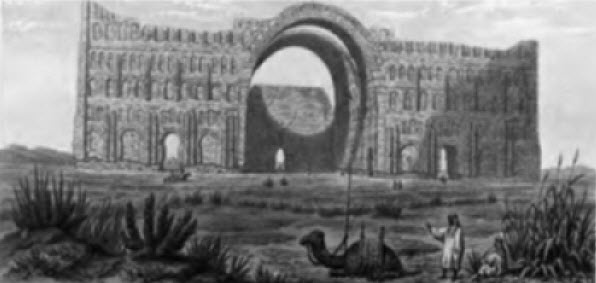 The Sassanian Empire (224 to 651), also known as the New Persian Empire, was the successor state to the Parthian Empire. It arose from the ruins of the Parthain Empire after its collapse as a result of internal division and civil war, and held sway over much of the former empire's territory. Like its predecessor, the Parthian Empire, the Sassanian Empire was in frequent conflict with the Roman Empire, and later the Byzantine Empire.
The Sassanian Empire (224 to 651), also known as the New Persian Empire, was the successor state to the Parthian Empire. It arose from the ruins of the Parthain Empire after its collapse as a result of internal division and civil war, and held sway over much of the former empire's territory. Like its predecessor, the Parthian Empire, the Sassanian Empire was in frequent conflict with the Roman Empire, and later the Byzantine Empire.
At the height of its territorial expansion, the Sassanian or New Persian Empire ruled over all of Iran, Iraq, Jordan, Lebanon, Syria, Palestine, and much of Egypt and Turkey. Its imperial ambitions led the New Persian Empire into war with the declining Roman Empire.
The great Byzantine–Sasanian War of 602–628, was the climactic conflict between the two world powers. Fighting took place on three continents: Asia, Africa and Europe as the Sassanians made a determined effort to conquer all that remained of the Byzantine Empire. Allied with and in coordination with the barbarian Bulgars and other tribes in the Balkans, the Sassannids laid siege to Constantinople, the capital of the Byzantine Empire, and made huge territorial gains. However they were eventually repulsed by the Romans under the able leadership of their emperor Heraclius who reconquered much of the near east, Turkey and Egypt.
Unfortunately the lengthy war between the Roman (Byzantine) Empire and the Sassanians exhausted both sides and left them vulnerable to the sudden invasion of the Muslims who conquered the New Persian Empire and deprived the Romans of most of their eastern provinces. Thereafter the conflict would be between the Romans and the Muslim invaders, which would gradually lead to the collapse of the eastern Roman Empire.
The territories of the New Persian Empire became one of the centers of Muslim culture, and contributed to its art and architecture.
 The Sassanian Empire (224 to 651), also known as the New Persian Empire, was the successor state to the Parthian Empire. It arose from the ruins of the Parthain Empire after its collapse as a result of internal division and civil war, and held sway over much of the former empire's territory. Like its predecessor, the Parthian Empire, the Sassanian Empire was in frequent conflict with the Roman Empire, and later the Byzantine Empire.
The Sassanian Empire (224 to 651), also known as the New Persian Empire, was the successor state to the Parthian Empire. It arose from the ruins of the Parthain Empire after its collapse as a result of internal division and civil war, and held sway over much of the former empire's territory. Like its predecessor, the Parthian Empire, the Sassanian Empire was in frequent conflict with the Roman Empire, and later the Byzantine Empire.